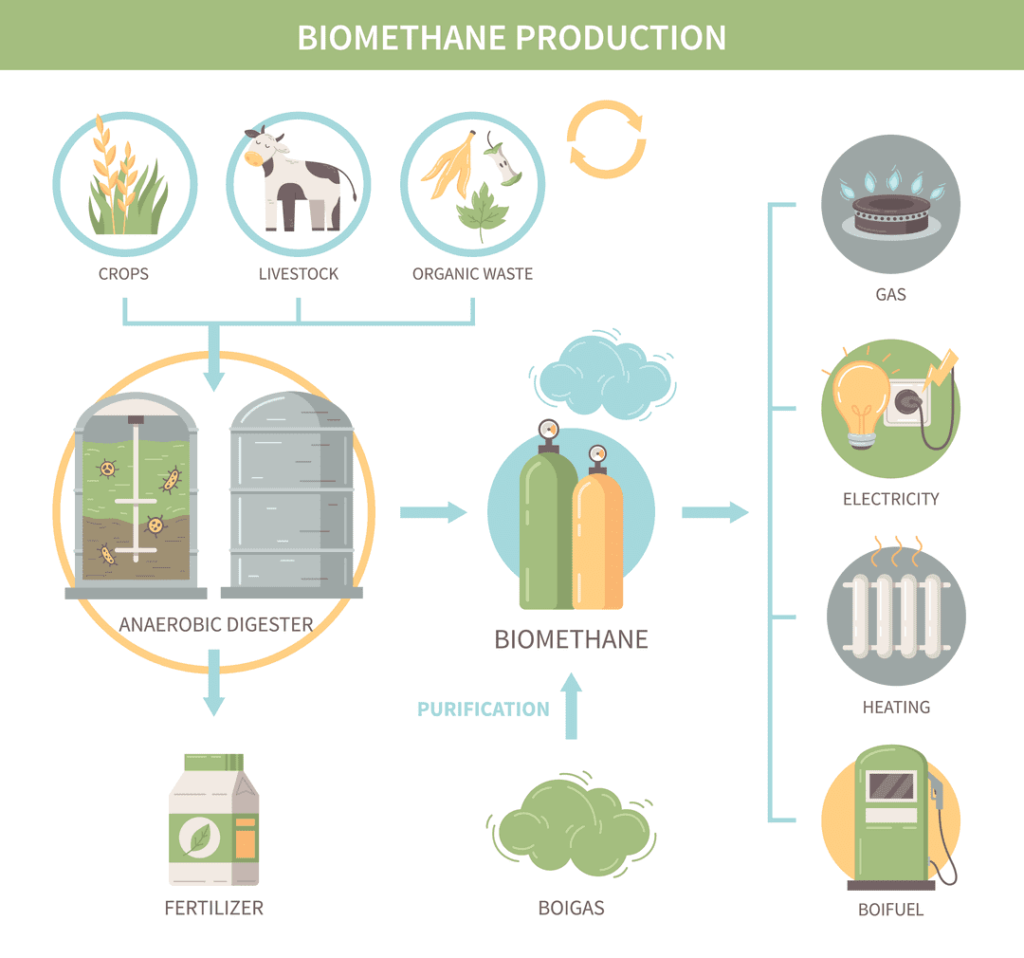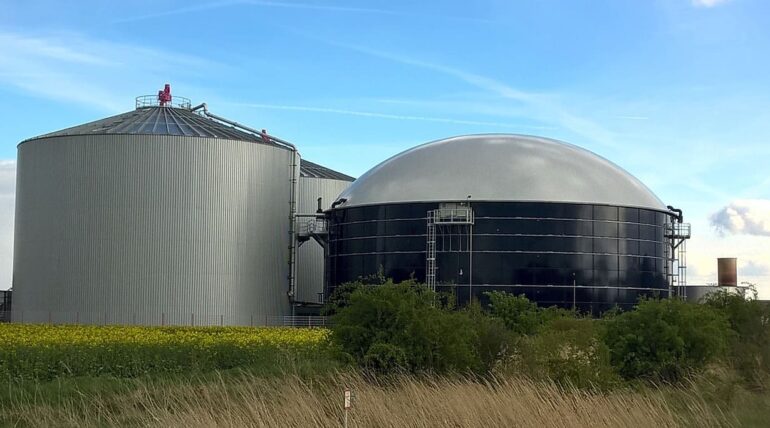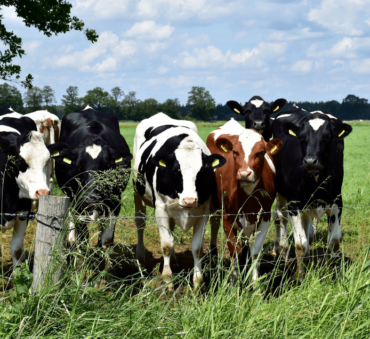There’s no doubt: The agriculture and food industries are a major source of many different products we need in everyday life. But they also generate significant waste.
The downside? If not handled properly, this waste can have a negative environmental impact.
The quest for sustainable solutions has led farmers to adopt innovative waste management techniques. However, the circular journey from producing food to utilizing its waste for energy often remains untapped.
But agricultural and food waste have a huge potential to be transformed into biogas and used as an energy source.
For example: Did you know that if all process-based agricultural residues are turned into bioenergy like biogas, they could contribute between 25 %-40 % of the total energy demand in developing countries?
Let’s explore more about the potential of biogas, including its types, sources, uses, and more.
Key Takeaways
- By transforming organic waste into biogas, we reduce reliance on fossil fuels and mitigate environmental impact.
- Biogas generators convert waste into valuable energy and fertilizers. From households to farms, this technology reshapes waste management.
- Beyond energy generation, biogas holds an array of advantages. It cuts down on waste disposal and represents a holistic solution for environmental, health, and economic challenges.
What is Biogas?
Biogas is a renewable energy source in gaseous form.
It’s formed through the anaerobic digestion (a process where bacteria break down biodegradable materials in an oxygen-free environment) of organic materials such as:
- Agricultural residues
- Food scraps
- Sewage
- Wastewater
- Plant material
The end result is a potent mixture of methane and carbon dioxide, along with trace amounts of other gases.
Did you know: The history of biogas dates back to 3,000 BC. Back then, humans harnessed the power of biogas decomposition for heating.

Biogas Types
There are two main biogas types:
Liquid Biogas
Liquid biogas (also known as LBG) is derived from biogas through a liquefaction process. This reduces its volume, making it easier to store and transport.
Its efficiency and reduced emissions make it a great clean vehicle fuel and an eco-friendly substitute for heating and electricity generation
Compressed Biogas
Compressed biogas (also known as CBG) is biogas that has undergone compression to become a high-density fuel.
This potent gas blend finds its purpose as a fuel, replacing conventional fossil fuels. As an environmentally conscious alternative, CBG is increasingly used in transportation, promoting more sustainable mobility.
Main Sources of Biogas
Biogas comes from a range of organic materials, each offering distinct benefits:
Biogas from Manure
Today, biogas systems can be incorporated into dairy, swine, and poultry farms.
This transforms solid to liquid waste, producing valuable methane gas that can be used to generate electricity or converted into CNG for trucks and bioplastics. The remaining liquid residue serves as fertilizer for cultivated land.
Biogas generation from manure results in fuel that has 60% off natural gas’s energy capacity, which makes it a good alternative.
Biogas from Human Waste
Creating energy from food waste is done through anaerobic digestion. But that’s not the only yield from this process. Besides biogas, the process also creates valuable solid compost called ‘digestate,’ which finds multiple sustainable applications.
Producing biogas from food waste on a large scale can help:
- Curb landfill contributions
- Reduce personal food waste
- Reduce energy bills
Biogas from Crop Residues
Biogas from crop residues involves harnessing energy from leftover plant materials after harvest. The anaerobic digestion of biogas here includes the processing of stalks, husks, and leaves.
This biogas energy allows farmers to:
- Reduce waste
- Generate power for on-farm use
- Contribute to a more sustainable energy landscape
Wastewater Treatment Biogas
Wastewater treatment biogas is produced through the treatment of organic waste in wastewater facilities. During the anaerobic digestion process, microorganisms break down organic matter, producing biogas rich in methane.
This biogas can be harnessed to generate electricity, heat, or even fuel for vehicles. Transforming wastewater into energy helps reduce greenhouse gas emissions and waste, contributing to an eco-friendlier energy cycle.
How is Biogas Made?
The production of biogas happens in biogas plants, which provide the perfect oxygen-free conditions. This involves different stages:
- Pre-treatment and digestion: Various organic substrates enter the digester. The fermentation tanks can accommodate a diverse range of substrates, but some of them might require pre-treatment in specialized containers before their entry.
- Fermentation: Microorganisms thrive as substrates are heated to distinct temperatures inside the digester. In the absence of light and oxygen, these microorganisms degrade organic matter. Careful mixing prevents the formation of layers within the tank.
- Biogas production: Fermentation culminates in the production of biogas predominantly comprising methane. Alongside methane and carbon dioxide, the gas also contains water and hydrogen sulfide, underscoring the need for robust steel tanks to withstand gas exposure.
- Digestate extraction: The digester is purged of the residual digestate after fermentation. This nutrient-rich biogas compost serves as an eco-friendly fertilizer, contributing to waste reduction and improved agricultural practices.
- Biogas purification: Rigorous biogas upgrading processes eliminate water, impurities, and hydrogen sulfide from the biogas. This meticulous purification produces biomethane, suitable for energy and heat generation. Quality control ensures the end product’s excellence.
Biogas Technology
Biogas plants and facilities (or biogas digesters) are available in various configurations and play a pivotal role in harnessing renewable energy from organic waste. Let’s explore three distinct types of biogas plants:
Balloon Plants
Balloon biogas plants employ flexible, airtight bags or balloons to contain the biogas-producing substrate.
How do they work?
Organic waste is fed into the bag, which expands as biogas is generated through anaerobic digestion. The bag’s pliable structure accommodates gas expansion.
Balloon plants are cost-effective and require minimal construction effort. Their flexibility allows them to accommodate variable gas volumes.
Fixed Dome Plants
Fixed dome biogas plants consist of a rigid, dome-shaped structure that holds the biogas-producing substrate.
Once the organic waste is introduced into the digester, the produced gas displaces the substrate upward into the dome. The dome remains stationary while gas accumulates within it.
Their advantage? Fixed dome plants have a design that ensures a well-sealed system, minimizing gas leakage.
Floating Drum Plants
These drum-shaped gas holders move vertically within water-filled chambers.
As biogas is generated, the gas holder floats to the surface of the water chamber. The floating drum’s movement indicates the gas volume produced.
Floating drum plants are known for their efficient biogas storage and precise indication of gas production levels.

What is Biogas Used for?
Biogas has multiple applications in the energy sector, enhancing efficiency and reducing environmental impact. Let’s delve into these diverse uses:
Fuel
As a valuable alternative to fossil fuel, biogas can be utilized to replace conventional gasoline or diesel. The combustion of biogas emits significantly fewer greenhouse gases and pollutants, contributing to cleaner air and reduced carbon emissions.
Electricity
Biogas holds immense potential in electricity generation. It can power generators to produce electricity, which can then be fed into the grid or used on-site. The process is not only environmentally friendly but also contributes to decentralizing energy production.
Heat Systems
Did you know that biogas serves as an efficient heat source for various applications?
For example, you can use it to fuel:
- Boilers
- Furnaces
- Combined heat and power (CHP) systems
Additionally, CHP systems generate both electricity and heat simultaneously, making biogas an effective solution for district heating and industrial processes.
Advantages of Biogas
Biogas offers lots of advantages that resonate in both environmental conservation and economic prosperity.
Environmental Benefits
Biogas plays a pivotal role in waste management.
Converting organic waste into energy prevents the release of harmful methane emissions into the atmosphere. This waste-to-energy conversion can:
- Reduce the strain on landfills
- Mitigate potential groundwater contamination
- Minimize the need for traditional waste disposal methods
Furthermore, the byproduct of the biogas production process, known as digestate, serves as an eco-friendly fertilizer, enhancing soil health and agricultural sustainability.
Economic Benefits
One of the cornerstones of biogas is its renewability.
As a source of energy derived from organic materials, it forms an unending cycle that doesn’t deplete natural resources. This contrasts with fossil fuels, which are finite and subject to price volatility.
Additionally, the adoption of biogas systems offers farmers an additional revenue stream, as they can sell excess energy back to the grid. Moreover, biogas production curtails the expenses associated with traditional waste disposal methods, providing a cost-effective and environmentally friendly waste management solution.
Disadvantages of Biogas
While biogas holds immense promise as a renewable energy source, it isn’t without its share of challenges, including:
- Technological limitations: Biogas production technology has yet to reach a level of efficiency that makes it accessible and cost-effective on a large scale. The absence of breakthrough advancements hinders its potential to become a primary energy source. The lack of substantial government investment also slows down the sector’s growth.
- Impurity concerns: Even after refining and compressing, biogas retains impurities that could be detrimental when used as fuel for vehicles. The potential corrosion of engine components could elevate maintenance costs. However, biogas’s composition makes it more suitable for household applications like stoves, boilers, and lamps.
- Temperature sensitivity: Similar to other renewable sources like solar and wind, temperature influences biogas generation. The optimal condition for the bacteria responsible for waste digestion lies around 37°C. In colder climates, additional heat energy is necessary to sustain a consistent biogas supply.
- Limited applicability in urban settings: The suitability of industrial biogas plants heavily depends on the abundance of raw materials like food waste and manure. This factor restricts its feasibility to rural and suburban regions rather than dense urban areas.
Let Us Help You Transform Your Waste into Energy
As we tread the path towards harnessing biogas for renewable energy, we must be aware of potential pitfalls.
Mismanagement of farm waste and flawed biogas production can jeopardize environmental and health gains. Added to this mix are the legal and logistical challenges that can further complicate matters.
This is where Shapiro steps in. Our waste management expertise and different partnerships ensure responsible and hassle-free waste handling, bridging business growth and environmental well-being.
Ready to embark on your sustainable waste management journey with our agricultural waste recycle and disposal services?
Contact us today to learn more about our services.
Baily Ramsey, an accomplished marketing specialist, brings a unique blend of anthropological insight and marketing finesse to the digital landscape. Specializing in educational content creation, she creates content for various industries, with a particular interest in environmental initiatives.



